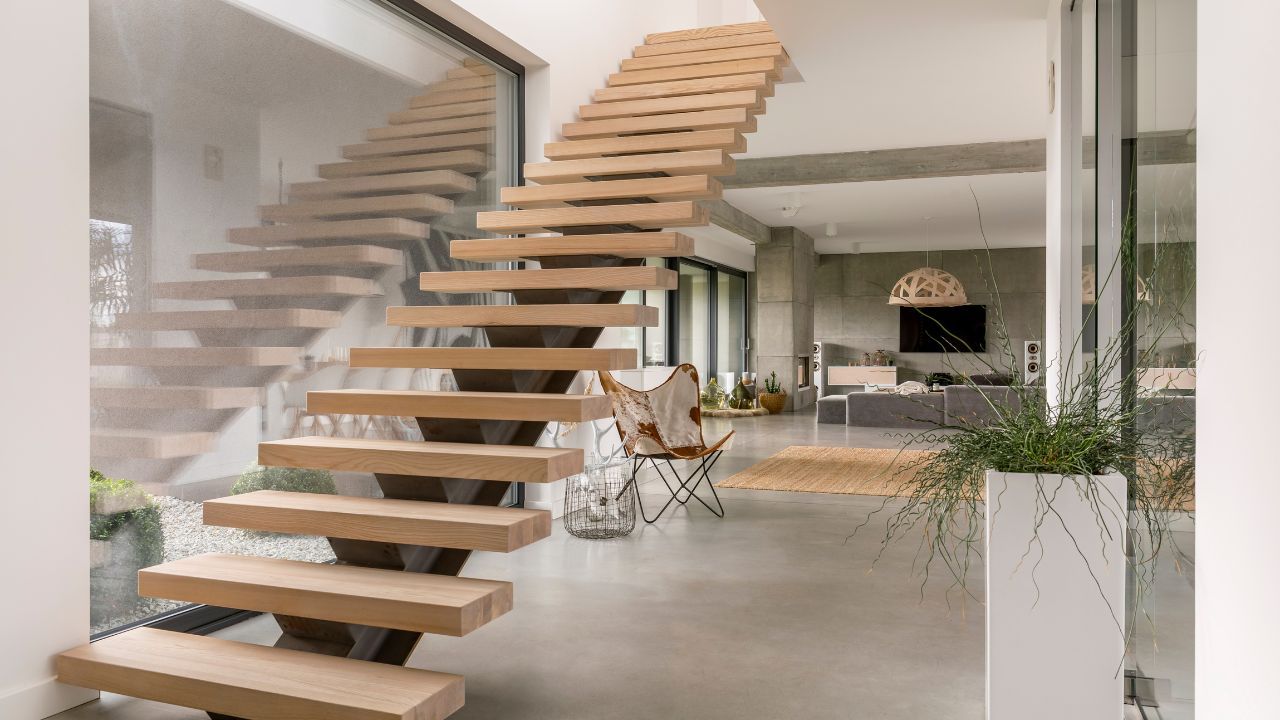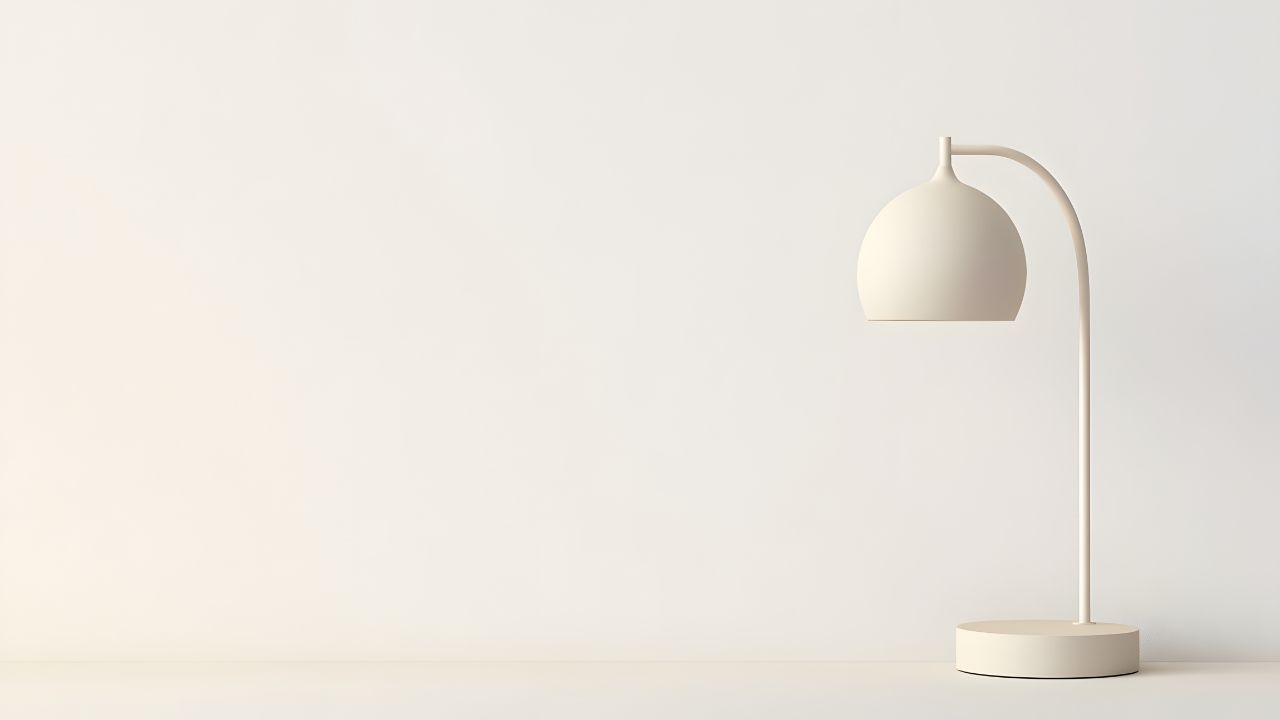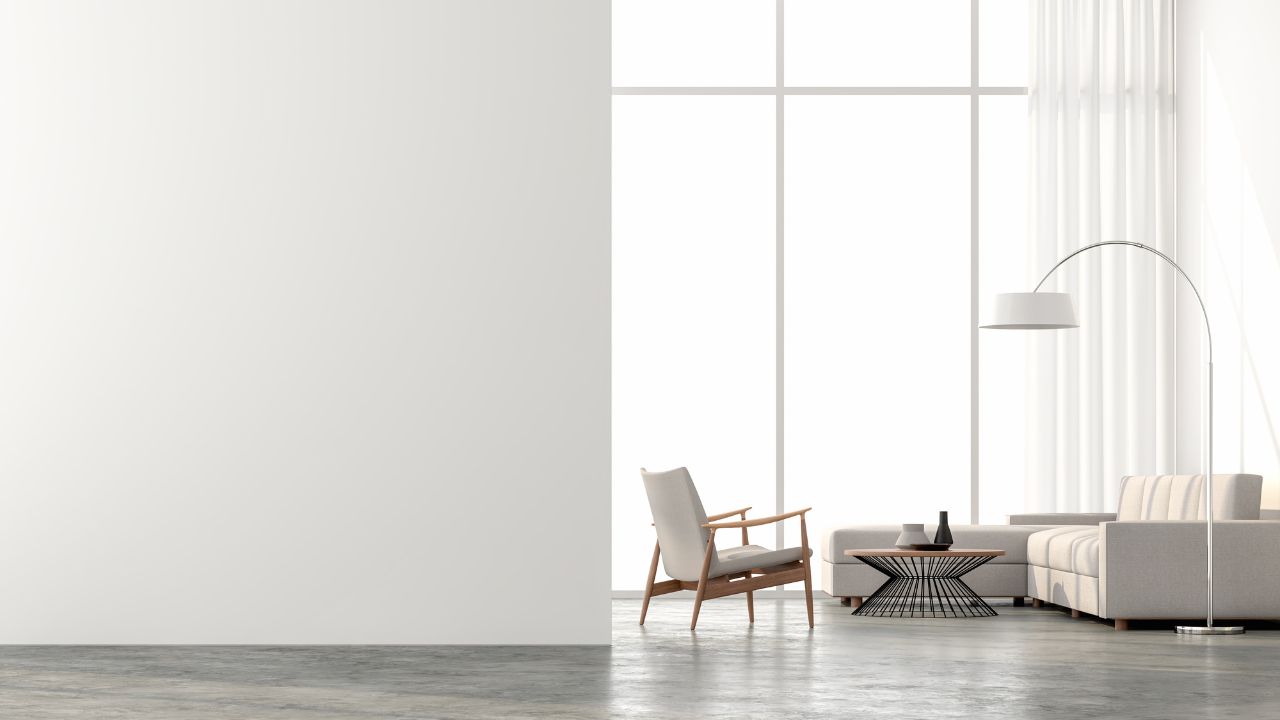The minimalist style is one of the most influential movements in contemporary design. Its essence starts from a clear premise: less is more.
More than a decorative style, minimalism is a philosophy that seeks formal purity, visual clarity, and total functionality.
In a context where visual stimuli are constant, this approach proposes a pause: spaces where silence, light, and order become the true protagonists.
Far from being a cold or impersonal style, well-executed minimalism conveys serenity, sophistication, and balance. For architects and interior designers, it represents an exercise in precision: designing with intention, caring for every line and every void until achieving absolute harmony between aesthetics and function.
Origin and Influence of the Minimalist Style
Minimalism emerged in the mid-20th century, inspired by modern architecture and by concepts from Eastern philosophy, especially the Japanese Ma, which understands emptiness not as absence, but as a space of balance.
The phrase “less is more” by architect Ludwig Mies van der Rohe synthesizes its philosophy: eliminate the unnecessary so that the essential takes center stage.
Over the decades, this movement became consolidated in countries such as Japan or the Nordic nations, where natural light, functionality, and material honesty are cultural pillars. In the 1990s, minimalism reached its maturity in interior design, offering an antidote to the visual saturation of the time.
Today, this style has evolved toward a warmer and more human version, where simplicity coexists with comfort and technology is integrated invisibly into interior architecture.

Key Principles of the Minimalist Style
Minimalism is not just a decorative style: it is a design philosophy that prioritizes visual and emotional clarity. Its fundamental principles are:
- Order and simplicity: every element has a purpose. There are no superfluous ornaments or visual excesses.
- Space and proportion: each room must breathe; emptiness becomes an aesthetic resource.
- Natural light: it is the most important material of minimalism, shaping the atmosphere and enhancing forms.
- Pure materials: stone, light wood, cement, glass, and metal combine in their most honest state.
- Neutral colors: whites, grays, and beiges dominate, with subtle accents in black or natural wood.
These principles make the minimalist style a safe choice for those who seek timeless, functional, and balanced spaces.
Essential Materials in Minimalist Projects
In the minimalist style, materials are not decorated: they are expressed. Every texture, finish, and shadow becomes part of the visual narrative of the space.
Natural Stone
Natural stone brings solidity and permanence. It is used in floors, countertops, or cladding, preferably in light tones such as white marble or limestone.
Its matte surface enhances the sense of purity and avoids unnecessary reflections. In contemporary interiors, a stone wall or monolithic kitchen block can act as the compositional axis of the ensemble.

Light Wood
Light wood introduces warmth and contrasts with the coolness of other materials. It is used in floors, carpentry, or furniture, always with soft grains and natural finishes.
Oak, birch, or beech are common options for their chromatic balance. In minimalism, wood does not decorate: it humanizes the space.

Polished Concrete
Polished cement or microcement defines much of contemporary minimalism.
Its continuous surface eliminates joints and generates spaciousness. Moreover, it offers a neutral base that enhances any architectural element.
In bathrooms or kitchens, its uniform appearance conveys cleanliness, serenity, and visual coherence.

Glass and Metal
Glass and metal complete the composition.
The former amplifies light and visually connects spaces, while the latter — in satin or anodized finishes — brings precision and modernity.
Both are used with moderation, in balance with stone and wood, so as not to break the general harmony.

Colors and Chromatic Palette
In minimalism, color is not decorative: it is structural.
The palette starts from a neutral base whites, beiges, soft grays, or sands upon which the entire spatial concept is built.
White acts as a canvas, amplifying natural light and generating a sense of visual cleanliness. Earth or wood tones introduce contrast and depth, while black is reserved for subtle accents, providing definition and balance.
The goal is to create serenity, not contrast. The true chromatic richness of minimalism arises from shadows, nuances between materials, and the dialogue between light and texture.
Furniture in the Minimalist Style
Minimalist furniture is defined by proportion, ergonomics, and discretion. It does not seek prominence but continuity.
The pieces are functional, with pure lines and no ornaments. A solid wood table with hidden structure, a low sofa in neutral fabric, or a wall-integrated shelf are examples of how furniture becomes part of the architecture.
Hidden storage is key. Built-in wardrobes without handles, smooth panels blending with walls, or invisible opening systems maintain visual order.
In bedrooms and kitchens, this integration turns functionality into aesthetics: what is unseen also designs.
In contemporary projects, minimalist furniture incorporates discreet technology: integrated LED lighting, antibacterial materials, or automated systems — always without breaking formal purity. The result is spaces where precision and calm coexist naturally.

Minimalist Lighting
In minimalism, light is another material. It does not simply illuminate: it builds the space.
Natural light should be the protagonist, filtered through light curtains or panels that soften its entry. Shadows on smooth surfaces are part of the visual language of the style.
Artificial light is integrated invisibly: recessed luminaires, hidden LED strips, or adjustable spotlights that model volumes without interrupting the purity of the ensemble.
Warm color temperatures (between 2700K and 3000K) provide comfort and avoid harsh contrasts.
The key is intention: every light point has a purpose, and its distribution reinforces architecture rather than decoration.

Layout and Application in Projects
The minimalist style adapts to both small homes and large spaces, because its essence lies in organization and proportion, not in scale.
Open floor plans are common, removing unnecessary divisions to foster visual continuity. In kitchens, furniture integrates with shared spaces; appliances hide behind panels to maintain formal purity.
In bathrooms and bedrooms, elements are reduced to the essentials: clean surfaces, noble materials, and lighting designed for well-being.
In workspaces, focus and visual lightness are prioritized: floating desks, absolute order, and absence of cables or distractions.
Every decision, however small, seeks a single goal: harmony. In minimalism, detail does not stand out but its absence is noticed.
Minimalism in a Contemporary Key
Contemporary minimalism has overcome its initial rigidity. It is no longer about empty spaces, but about conscious spaces, where every element serves well-being.
Today, minimalist projects combine purity of line with the warmth of natural materials. A white wall can coexist with an oak table; a microcement floor can be complemented with soft textiles or sculptural lamps.
The result is a human minimalism, which does not renounce comfort or emotion.

Our Professional Opinion
The minimalist style in interior design represents a pursuit of balance and visual honesty. In an age dominated by excess, it proposes living with less, but with more meaning.
For architects and interior designers, the challenge lies in ensuring that simplicity does not become emptiness, but an expression of coherence and quality.
With tools like Teowin Live, it is possible to design and present minimalist projects with a level of detail that goes beyond form: from material selection to light management.
Precise renderings, natural light simulations, and finish selection allow visualizing how serenity can become design.
Ultimately, minimalism is not the absence of elements, but the presence of intention. A style that transforms space into experience, and visual silence into its purest form of elegance.
